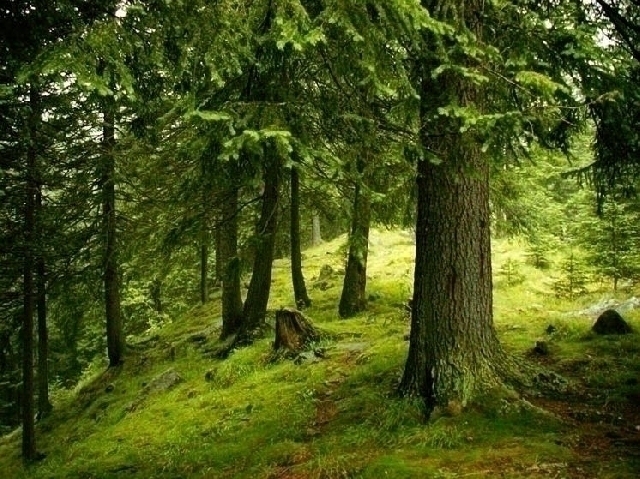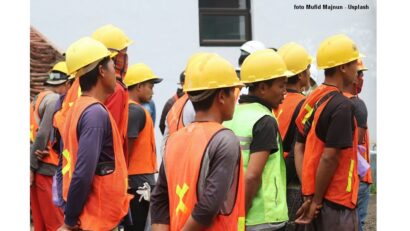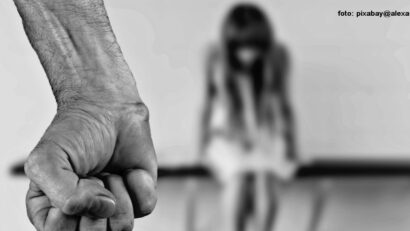Environmental activists against deforestation
Today, only 27.45% of Romanias territory is covered by woods, which is significantly below the European average of 32.4%.

Christine Leșcu, 03.05.2017, 13:19
The culture of non-violent resistance has already developed in Romania in various fields, environmental protection included. For instance, a few years ago, many public protests were staged in Bucharest against the situation in Rosia Montana, as well as against illegal tree-cutting and deforestation. Although wood exploitation is allowed only if certain requirements are met, regulations in the field have been constantly broken in the past 15-20 years, so the situation of Romanian forests has become dramatic.
Today, only 27.45% of Romania’s territory is covered by woods, which is significantly below the European average of 32.4%. According to a study conducted by Greenpeace Romania, between 2000 and 2014 Romania lost 3 hectares of forest per hour. Actually, all Greenpeace activists as well as green activists from other NGOs were among the first to signal the tragic situation of forests in Romania. Volunteers, out of their own will or following notifications by regular citizens, walk regularly through the mountains and check whether trees are illegally cut and transported.
However, proving that such activities are illegal is a difficult job, for which reason more vigilant eyes are needed in the forest, as the Greepeace programme coordinator Valentin Salageanu said: “I believe that the main problem that we need to solve, and we have been trying to do this, is to be present in as many places as possible. To this end, we have created an online platform, a website to which anybody can contribute and report illegal situations, as there are many people who love the mountain and many concerned citizens, who see that trees are cut in their villages. The site is called salvezpadurea.ro (in English “I save the forest”), and we check every notification registered on this site. If it’s a serious case and suspicions are confirmed, we go there and check the situation ourselves. “
Gabriel Paun from Agent Green, recalls the beginnings of such on-site verifications: “Our activity started in the national parks, which theoretically are the most representative, because they are Romania’s natural heritage, home to most of the virgin forests. So, I would just go to a national park and follow the trucks carrying logs that were extremely big. I wanted to see where the wood was taken, because not only those who cut and carry the logs are responsible. There is an entire chain of responsibility here. The most guilty party is the one that orders the wood and subsequently sells it, in various forms and for various purposes.”
Before going on field verification, the documents that must accompany any transport or cutting activity are verified, to make sure everything is legal. In this way, Valentin Salageanu and his colleagues can avoid risks.“There are all sorts of risks, ranging from common accidents, caused by the terrain, for instance. Then, there are risks resulting from the interaction with the people involved: forestry workers, local authorities or gendarmes. But there have been no serious incidents. Every time we go there we are very well documented, so that we have strong arguments in favor of us being entitled to be there. Everything we’ve done so far was to record or take pictures of illegal transports and present the evidence to the Forestry Guard. So, the authorities in charge could use our evidence in order to conduct their investigations.”
Unfortunately, there have been situations in which people caught in illegal action by green activists became violent. Here is Gabriel Paun recalling such situations: “In principle, what we do is gather video and photo evidence. Most of the times I managed to stay hidden, far from scrutinizing eyes. Sometimes we would live the cameras there, to collect them later, but they eventually discovered and stole them. We only managed to recover one or two and we used the captions. Sometimes we do run into workers or even poachers, who are usually peaceful. However, there have been situations in which some of them have been really aggressive, and this is usually a sign that something is wrong about what they do. They are violent and people get hurt. It has happened to me, too.”
For a year now, after the adoption of a new Forestry Code, government authorities have been developing additional tools to monitor wood exploitation. Here is the Greenpeace campaign coordinator Valentin Salagean again: “In the past years, starting with the 2015 anti-deforestation campaigns, progress has been made in rendering the sector more transparent. There is now a forest radar, a system that allows citizens to check whether a transport is illegal or not, without having to call the police. If the transport is illegal, then you can call the police. Last year a new website became functional too, inspectorulpadurii.ro, which provides information about current operations of wood exploitation. Still, the law under which this transparency is supposed to be achieved has not come into force yet, we are still in the trial period.”
The bill making the application ‘inspectorul padurii’ a legal application has been delayed until October 21st, 2017. Environmental organizations, however, keep doing their job, with the aim of protecting Romania’s virgin forests in particular. In 2001, Romania used to host some 62% of Europe’s virgin forests. Unfortunately, many of them have been cut down ever since.






























